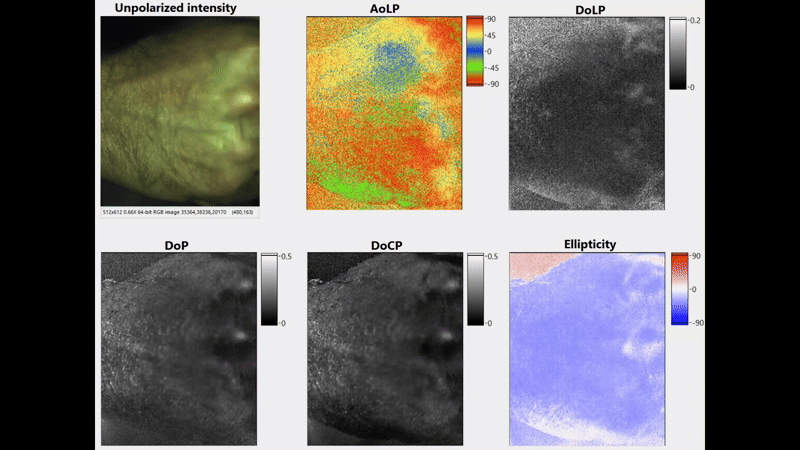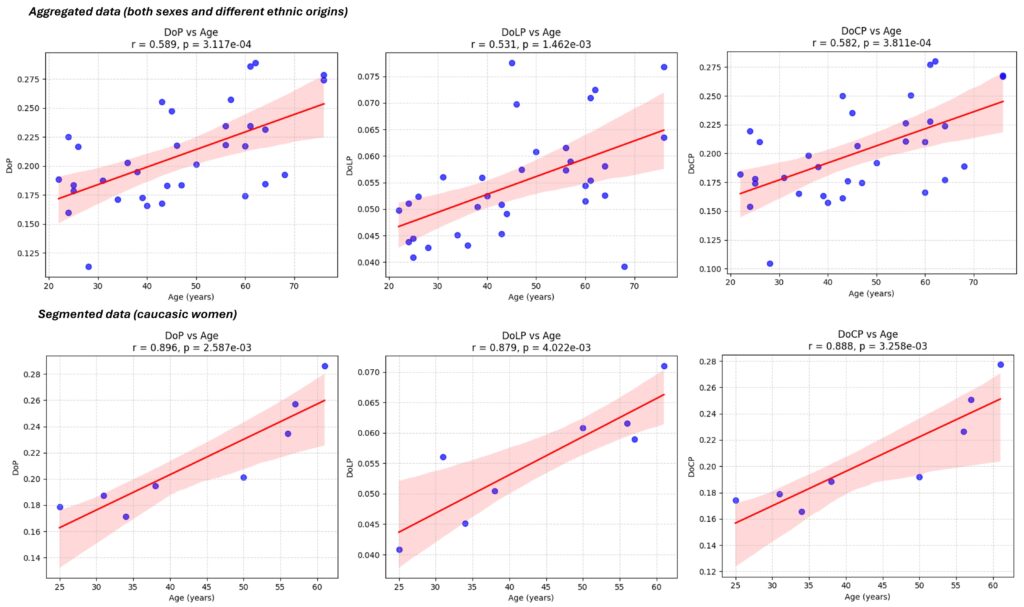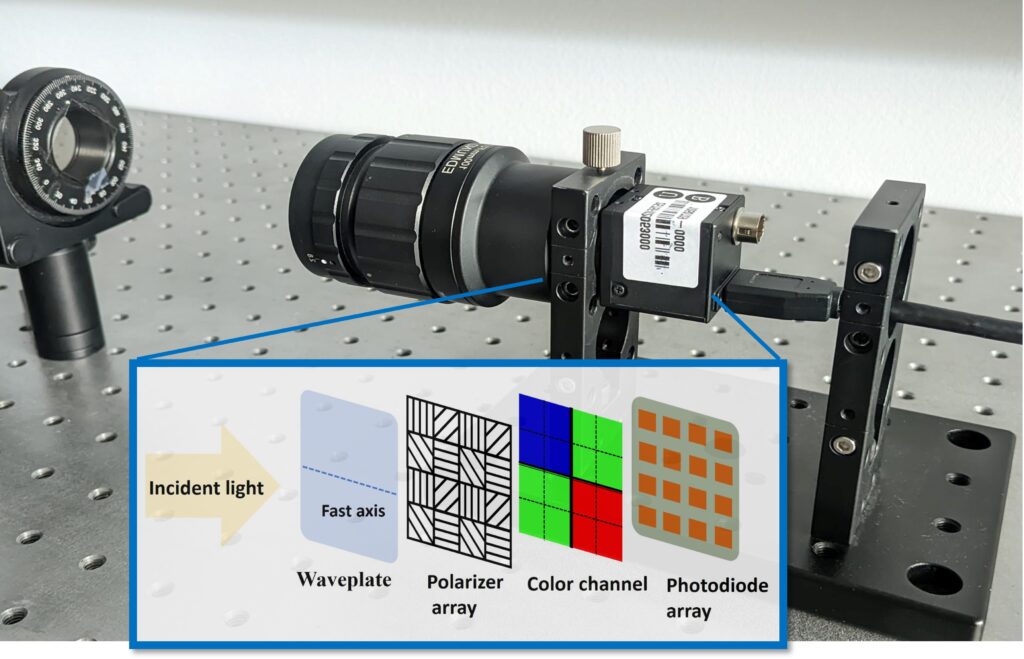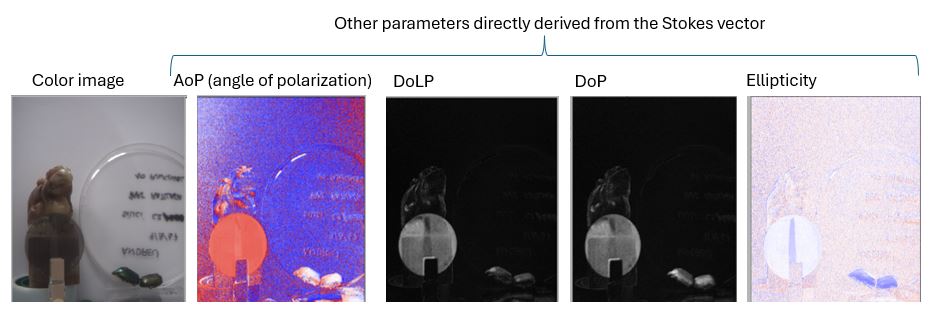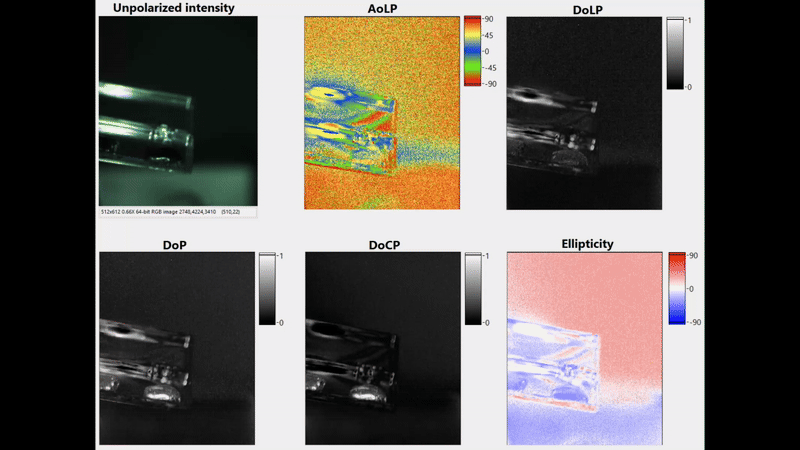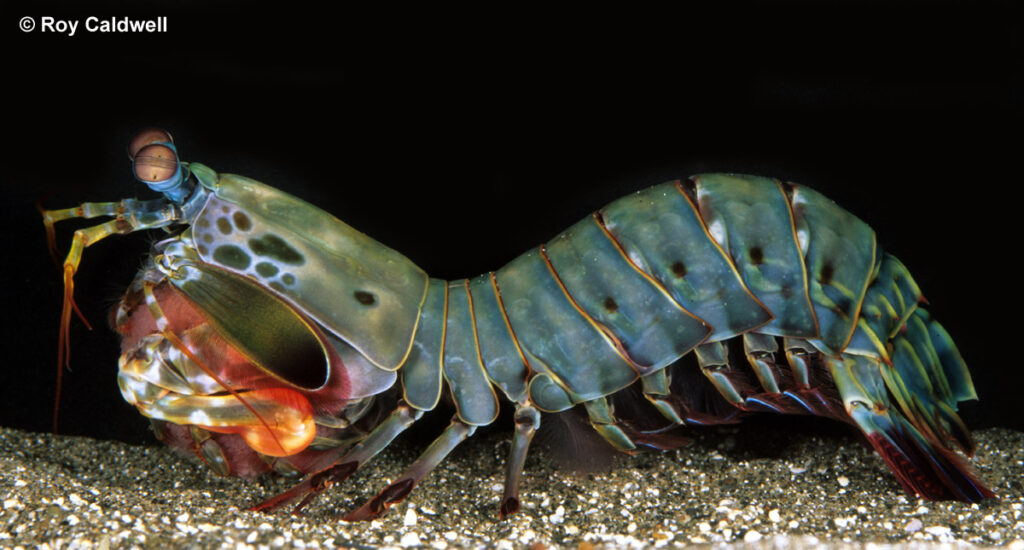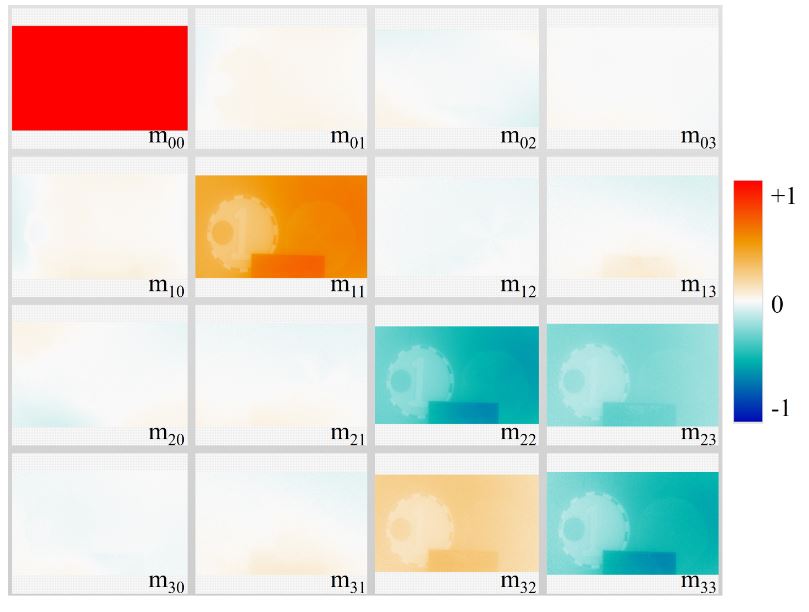We introduce a novel application of our patented Polvision technology, engineered specifically for advanced dermatological assessment. The new Polvision Dermatoscope integrates our state-of-the-art, real-time full-Stokes polarimetric camera with a custom ring LED illumination system that uses circularly polarized light.
This unique configuration allows the system to non-invasively capture a complete polarization dataset from the skin, measuring many critical parameters simultaneously:
- Degree of Polarization (DoP)
- Degree of Linear Polarization (DoLP)
- Degree of Circular Polarization (DoCP)
- Angle of Linear Polarization (AoLP)
Alongside this quantitative imaging data, a color image of the investigated region is also recorded, providing full clinical context.
Traditional dermatoscopes often struggle with polarization artifacts caused by surface reflection and skin topography. The Polvision Dermatoscope’s use of circular polarization as an illumination source fundamentally overcomes this limitation. This approach effectively minimizes sensitivity to superficial topographic effects, allowing the light to penetrate the epidermis and interact with subsurface structures.
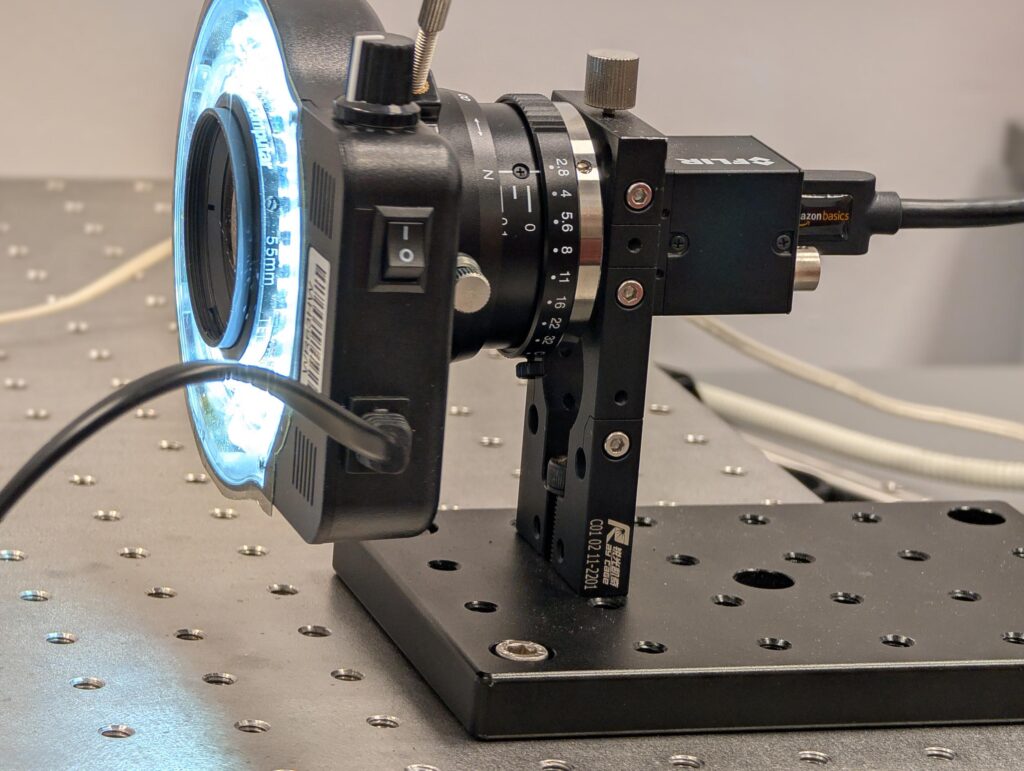
However our full-Stokes sensor retains the ability to capture linear polarization signatures generated by birefringent structures within the dermis, such as collagen fibers. This dual capability—bypassing surface effect while remaining highly sensitive to subsurface biomarkers—provides an unprecedented diagnostic detail.
Cosmetic and Clinical Applications
Our technology platform enables two powerful, distinct applications for clinical and cosmetic dermatology.
Skin Age
The “skin age” of an individual may not correlate directly with their chronological age, as it is heavily influenced by extrinsic and intrinsic factors. The Polvision Dermatoscope offers a straightforward, quantitative method to evaluate skin health and age.
- The Mechanism: In skin, the epidermis is a primary source of light scattering, a process that strongly depolarizes incident light. As a person ages, the skin undergoes significant structural changes, including the thinning of the epidermis.
- The Biomarker: A thinner epidermis results in less light scattering. Consequently, the light reflected back to the sensor is less depolarized, registering a higher Degree of Polarization (DoP).
- The Result: Our preliminary in-vivo studies (conducted on the dorsum of the hand of volunteers) demonstrate a clear and robust correlation between chronological age and the measured Degree of Polarization, with the DoP increasing significantly with age.
This capability unlocks a non-invasive, objective biomarker for tracking skin health, evaluating the efficacy of anti-aging treatments, and providing personalized patient consultations.
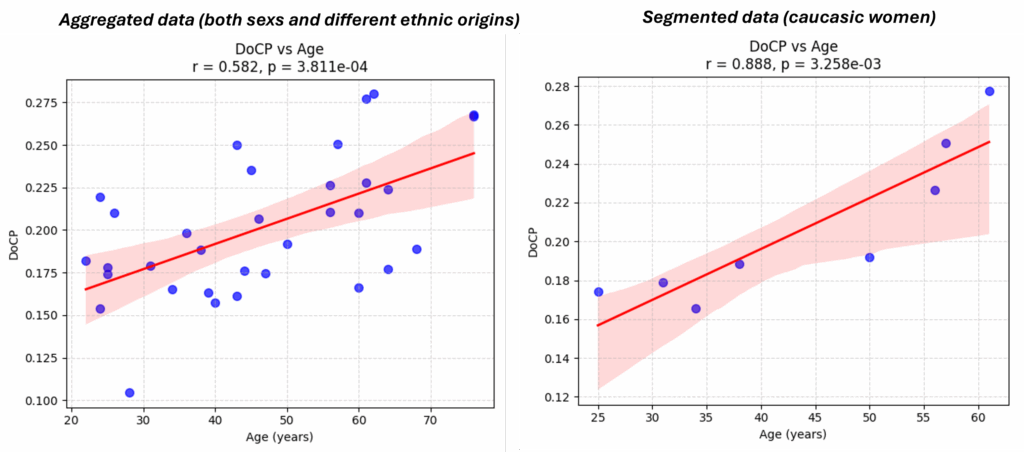
If images are put side by side, these kinds of differences can be observed:
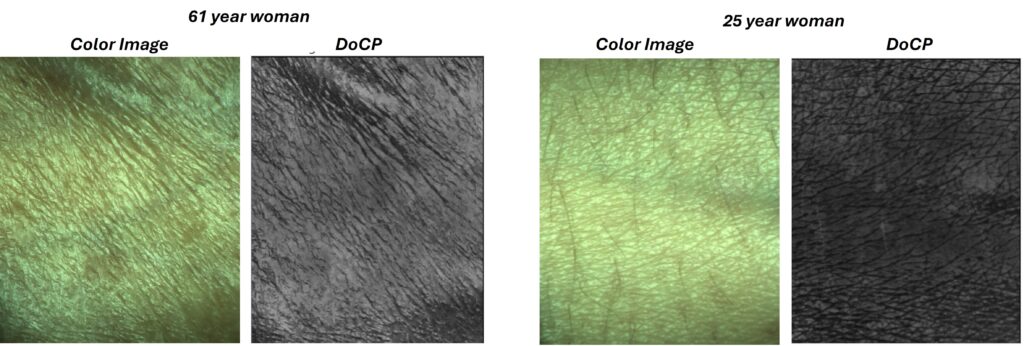
Quantitative Analysis of Skin Lesions
The Polvision Dermatoscope provides enhanced data to facilitate the differentiation of benign and malignant skin lesions. By analyzing a lesion’s complete polarization signature—the system can detect subtle changes in tissue architecture that are invisible to the naked eye.
Generally, high melanin content in a lesion (which will make it appears dark) increases the DoP. This occurs because melanin’s strong light absorption dramatically reduces multiple scattering which is the primary depolarizing effect. However, this DoP elevation will occur in both benign and malignant lesions, so additional contrast is needed.
- Benign Lesions (e.g., Nevi): These features are typically non-invasive. Even if highly pigmented (which will highly increases the DoP), they preserve the organized, birefringent collagen network of the dermis. This results in a significant high Degree of Linear Polarization (DoLP), indicating structural integrity. I.e. the collagen matrix will convert part of the incomming circular polarizated into linear polarization.
- Malignant Lesions (e.g., Melanoma): Malignancy is characterized by invasive, chaotic growth that actively degrades and destroys the dermal collagen network. This architectural breakdown causes a significant loss of birefringence and a corresponding low levels of DoLP signal (note that DoCP and DoP will be still high for heavily pigmented lesions).
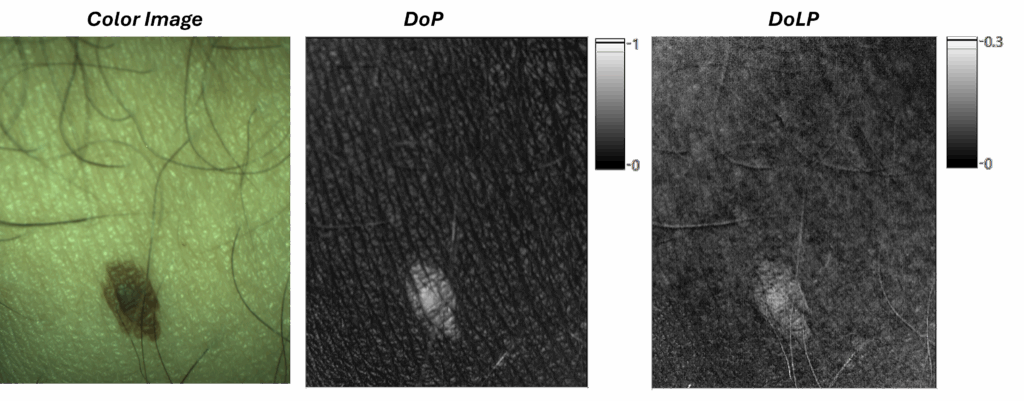
Who We Partner With
We are seeking strategic partners to integrate our unique tissue analysis technology into medical and aesthetic applications.
- Medical Dermatology & Oncology: For clinics and hospital networks seeking to improve skin cancer diagnostic accuracy and reduce unnecessary biopsies.
- Cosmetic & Anti-Aging: For aesthetic clinics and brands that need to objectively measure skin health, and track the efficacy of anti-aging treatments.
- Medical Device Distributors: To add a breakthrough, dual-market platform (oncology and aesthetics) to your advanced imaging portfolio.
- AI & Imaging Companies: To leverage our exclusive polarization data, adding deep structural biomarkers (like collagen integrity) to your diagnostic algorithms.
Further data
All parameters at adquired at video-rate (10-20 fps). This is capture of how real-time data is visualized.
